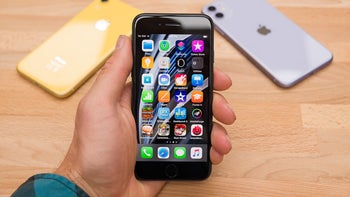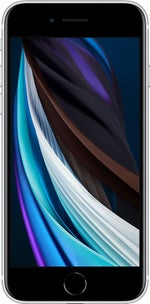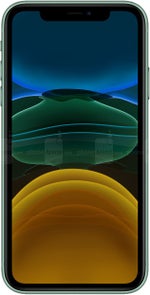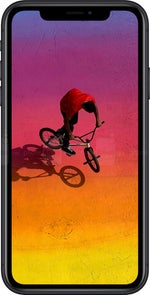Apple iPhone SE (2020) vs iPhone 11 vs iPhone XR
We may earn a commission if you make a purchase from the links on this page.

On paper, Apple’s new iPhone SE (2020) looks like a surefire success. It serves as both an excellent entry-level device into the Apple ecosystem as well as the coveted replacement for users of older iPhones, all thanks to its aggressive pricing and no-compromise hardware borrowed from Apple’s flagship $1,000+ iPhones.
But which affordable iPhone should you get, the new iPhone SE 2020, the iPhone XR, or the iPhone 11?
If size is of utmost importance to you, then the iPhone SE is an absolute winner. Truly, the most appealing aspect of the new iPhone SE is its affordable $399 starting price. The compact size is a close second, which trumps both the iPhone 11 and iPhone XR in terms of overall dimensions. Of course, this comes at the expense of having a much smaller 4.7” display in comparison with the 6.1” iPhone 11 and iPhone XR.
Overall, we’d recommend either getting or sticking with the iPhone 11 which is a much more future-proof and versatile device thanks to its superior battery life and camera features. Yet, this comes at a higher cost.
The iPhone XR lags behind its two siblings, but this doesn’t mean it’s a bad device. However, the iPhone SE and iPhone 11 are superior in key aspects, which makes the iPhone XR a less-compelling purchase.
If you’ve used an iPhone 8, then the iPhone SE 2020 would hide no secrets from you. In fact, the only physical difference between the two is the missing 3D Touch pressure-sensitive display on the iPhone SE 2020.
In terms of design, the iPhone SE uses the same bezel-heavy and dated design that could trace its origins all the way back to 2014 with the iPhone 6-series. While the jump has been made from metal to glass, the general design remains the same and would certainly be favored by those feeling nostalgic about the physical button and the overall footprint of Apple’s pre-OLED phones.
In terms of overall size, the iPhone SE is indeed quite pocketable and extremely lightweight, making it a pretty striking sight in 2020, when most all phones are pushing the limits with their footprints.
The iPhone SE comes along with the good old 4.7-inch Retina LCD display that’s been used since the iPhone 6 in 2014. Of course, it has learned a few new tricks: it has True Tone, Dolby Vision, and HDR10. With a resolution of 750x1334 pixels, the iPhone SE is definitely not among the sharpest displays, but that’s what you should expect from Apple’s compact iPhones.
In comparison, both the iPhone 11 and iPhone XR offer greater screen-to-body ratio and larger 6.1-inch displays, and when you put these next to the iPhone SE, the latter could easily feel pretty claustrophobic.
The iPhone SE might not have the largest display, but it has the brightest one. This translates well to outdoor visibility, especially compared to the iPhone XR, which is noticeably less bright under direct sunlight.
Thanks to the Apple A13 Bionic and the single OIS-enabled 12MP camera, the Apple iPhone SE 2020 is capable of delivering some truly outstanding photography results for a $399 device. Thanks to the Apple A13 chip, the iPhone SE can capture photos with great dynamics thanks to the Smart HDR feature.
Another pretty important difference is the ultra-wide angle camera on the iPhone 11, which can’t really be emulated on either the iPhone SE or the iPhone XR. Here’s a comparison showing how much more you can fit in the frame with the iPhone 11’s secondary camera.
Computational photography is the main strength of the iPhone SE, and thanks to it, you can even shoot portraits despite the single camera. Yet, expect artifacts with the object separation. Despite that, portraits generally turn out good.
However, when the lights go down, the iPhone SE can’t really hold a candle to the iPhone 11 which has a dedicated Night Mode. Low-light photos coming out of the iPhone SE are okay, but there’s often noise and artifacts that don’t sit too well when compared to the iPhone 11’s Night Sight prowess.
In terms of selfie prowess, all iPhones generally perform the same. You can expect fairly detailed selfies with decent colors and dynamic range. Good enough!
Despite the humble looks, the iPhone SE is a very potent video powerhouse, especially in its price range. Video stabilization, dynamic range, detail, no limitations in 4K video capture time, fast and reliable auto-focusing, and last but not least, strong apps on iOS that allow you to capture RAW footage for the true enthusiasts make this tiny iPhone the best budget camera you can buy.
The same applies to the iPhone 11 as well. It has all the bells and whistles supported on the iPhone SE and raises the bar with its ultra-wide angle video recording capabilities, which make it a tad more versatile.
You can’t really find anything more capable than the iPhone SE (2020) in its price range. Starting at $399, it matches Apple’s flagship iPhone 11-series and wipes the ground with its similarly priced Android rivals.That’s just to be expected from the Apple A13 Bionic. Moreover, it comes with 3GB of RAM and 64GB of native storage in the basic version, which could be viewed as pretty dated in 2020.
This applies to the iPhone 11 as well, which is powered by the same chipset and is equally capable. It comes with some extra RAM, bringing the grand total to 4GB, but this doesn’t mean it’s much more capable than the iPhone SE as both phones benefit from iOS’ exceptional memory management.
The iPhone XR, on the other hand, has the older Apple A12 ad 3GB of RAM, making it the least capable in this race.
With the good, you also have to take the bad. For all its compactness and lightweight stature, the iPhone SE simply lacks the physical space to accommodate a hefty battery and only comes along with a 1821mAh unit. Because of this, it delivers a pretty mediocre battery life. Provided that you only use the iPhone SE lightly throughout your day or mainly browse the web with it, it would likely last you a day. Yet, spice things up a bit by watching a YouTube video or playing a mobile game, and your battery life will quickly go from “okay” to just “bad”.
This doesn’t really apply to the iPhone 11 and the iPhone XR. Thanks to their 3,110mAh and 2,942mAh battery units, they are capable of easily outlasting the iPhone SE 2020 in every aspect, be it light usage, gaming, or media consumption.
Charging is yet another aspect in which the iPhone SE 2020 disappoints. It takes 2 hours and 30 minutes to recharge it with the supplied 5W charger in the box. That’s an eternity. Granted, topping up the iPhone 11 takes nearly 3 hours and a half with the same 5W charger, but the latter could also be recharged with Apple’s faster 18W charger, which does the trick in 1 hour and 49 minutes. The iPhone SE also supports the same 18W charger, and it gets topped up in around 2 hours, which is much more manageable.
If size is of utmost importance to you, then the iPhone SE is an absolute winner. Truly, the most appealing aspect of the new iPhone SE is its affordable $399 starting price. The compact size is a close second, which trumps both the iPhone 11 and iPhone XR in terms of overall dimensions. Of course, this comes at the expense of having a much smaller 4.7” display in comparison with the 6.1” iPhone 11 and iPhone XR.
Another area in which the new iPhone SE triumphs is computational power. It comes with the Apple A13 Bionic, which is the chipset of choice inside the iPhone 11, 11 Pro, and 11 Pro Max, so we see no compromises here – the device is futureproofed for a couple of years at the very least.
Overall, we’d recommend either getting or sticking with the iPhone 11 which is a much more future-proof and versatile device thanks to its superior battery life and camera features. Yet, this comes at a higher cost.
The iPhone XR lags behind its two siblings, but this doesn’t mean it’s a bad device. However, the iPhone SE and iPhone 11 are superior in key aspects, which makes the iPhone XR a less-compelling purchase.
iPhone SE 2020 vs iPhone 11 vs iPhone XR design and size
If you’ve used an iPhone 8, then the iPhone SE 2020 would hide no secrets from you. In fact, the only physical difference between the two is the missing 3D Touch pressure-sensitive display on the iPhone SE 2020.
In terms of design, the iPhone SE uses the same bezel-heavy and dated design that could trace its origins all the way back to 2014 with the iPhone 6-series. While the jump has been made from metal to glass, the general design remains the same and would certainly be favored by those feeling nostalgic about the physical button and the overall footprint of Apple’s pre-OLED phones.
In terms of overall size, the iPhone SE is indeed quite pocketable and extremely lightweight, making it a pretty striking sight in 2020, when most all phones are pushing the limits with their footprints.
iPhone SE 2020 vs iPhone 11 vs iPhone XR display
The iPhone SE comes along with the good old 4.7-inch Retina LCD display that’s been used since the iPhone 6 in 2014. Of course, it has learned a few new tricks: it has True Tone, Dolby Vision, and HDR10. With a resolution of 750x1334 pixels, the iPhone SE is definitely not among the sharpest displays, but that’s what you should expect from Apple’s compact iPhones.
In comparison, both the iPhone 11 and iPhone XR offer greater screen-to-body ratio and larger 6.1-inch displays, and when you put these next to the iPhone SE, the latter could easily feel pretty claustrophobic.
The iPhone SE might not have the largest display, but it has the brightest one. This translates well to outdoor visibility, especially compared to the iPhone XR, which is noticeably less bright under direct sunlight.
iPhone SE 2020 vs iPhone 11 vs iPhone XR camera
Thanks to the Apple A13 Bionic and the single OIS-enabled 12MP camera, the Apple iPhone SE 2020 is capable of delivering some truly outstanding photography results for a $399 device. Thanks to the Apple A13 chip, the iPhone SE can capture photos with great dynamics thanks to the Smart HDR feature.
Another pretty important difference is the ultra-wide angle camera on the iPhone 11, which can’t really be emulated on either the iPhone SE or the iPhone XR. Here’s a comparison showing how much more you can fit in the frame with the iPhone 11’s secondary camera.
Computational photography is the main strength of the iPhone SE, and thanks to it, you can even shoot portraits despite the single camera. Yet, expect artifacts with the object separation. Despite that, portraits generally turn out good.
However, when the lights go down, the iPhone SE can’t really hold a candle to the iPhone 11 which has a dedicated Night Mode. Low-light photos coming out of the iPhone SE are okay, but there’s often noise and artifacts that don’t sit too well when compared to the iPhone 11’s Night Sight prowess.
In terms of selfie prowess, all iPhones generally perform the same. You can expect fairly detailed selfies with decent colors and dynamic range. Good enough!
iPhone SE 2020 vs iPhone 11 vs iPhone XR video recording
Despite the humble looks, the iPhone SE is a very potent video powerhouse, especially in its price range. Video stabilization, dynamic range, detail, no limitations in 4K video capture time, fast and reliable auto-focusing, and last but not least, strong apps on iOS that allow you to capture RAW footage for the true enthusiasts make this tiny iPhone the best budget camera you can buy.
iPhone SE 2020 vs iPhone 11 vs iPhone XR performance and hardware
You can’t really find anything more capable than the iPhone SE (2020) in its price range. Starting at $399, it matches Apple’s flagship iPhone 11-series and wipes the ground with its similarly priced Android rivals.That’s just to be expected from the Apple A13 Bionic. Moreover, it comes with 3GB of RAM and 64GB of native storage in the basic version, which could be viewed as pretty dated in 2020.
This applies to the iPhone 11 as well, which is powered by the same chipset and is equally capable. It comes with some extra RAM, bringing the grand total to 4GB, but this doesn’t mean it’s much more capable than the iPhone SE as both phones benefit from iOS’ exceptional memory management.
The iPhone XR, on the other hand, has the older Apple A12 ad 3GB of RAM, making it the least capable in this race.
iPhone SE 2020 vs iPhone 11 vs iPhone XR battery life
With the good, you also have to take the bad. For all its compactness and lightweight stature, the iPhone SE simply lacks the physical space to accommodate a hefty battery and only comes along with a 1821mAh unit. Because of this, it delivers a pretty mediocre battery life. Provided that you only use the iPhone SE lightly throughout your day or mainly browse the web with it, it would likely last you a day. Yet, spice things up a bit by watching a YouTube video or playing a mobile game, and your battery life will quickly go from “okay” to just “bad”.
Charging is yet another aspect in which the iPhone SE 2020 disappoints. It takes 2 hours and 30 minutes to recharge it with the supplied 5W charger in the box. That’s an eternity. Granted, topping up the iPhone 11 takes nearly 3 hours and a half with the same 5W charger, but the latter could also be recharged with Apple’s faster 18W charger, which does the trick in 1 hour and 49 minutes. The iPhone SE also supports the same 18W charger, and it gets topped up in around 2 hours, which is much more manageable.































Things that are NOT allowed: